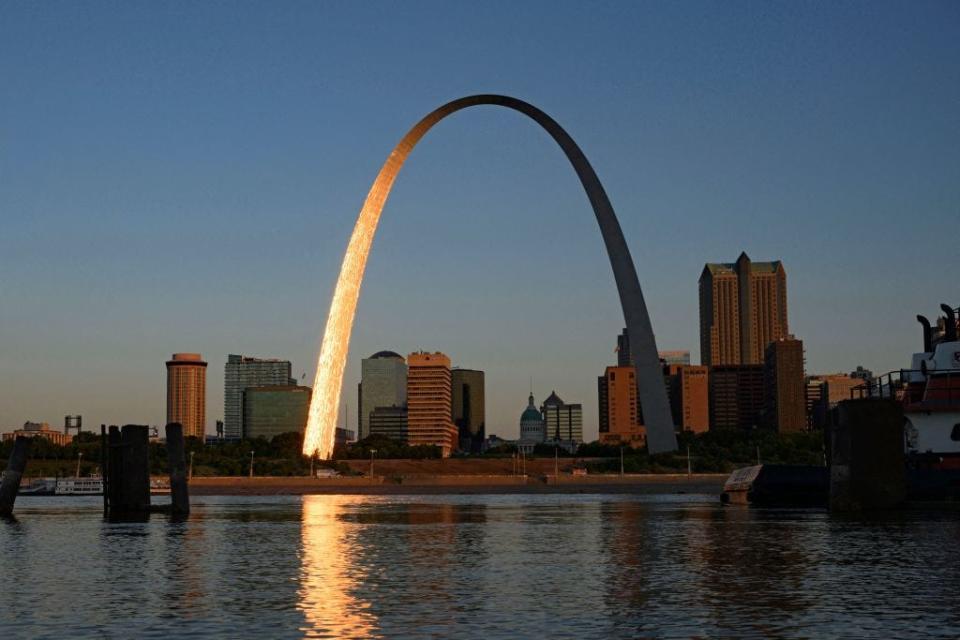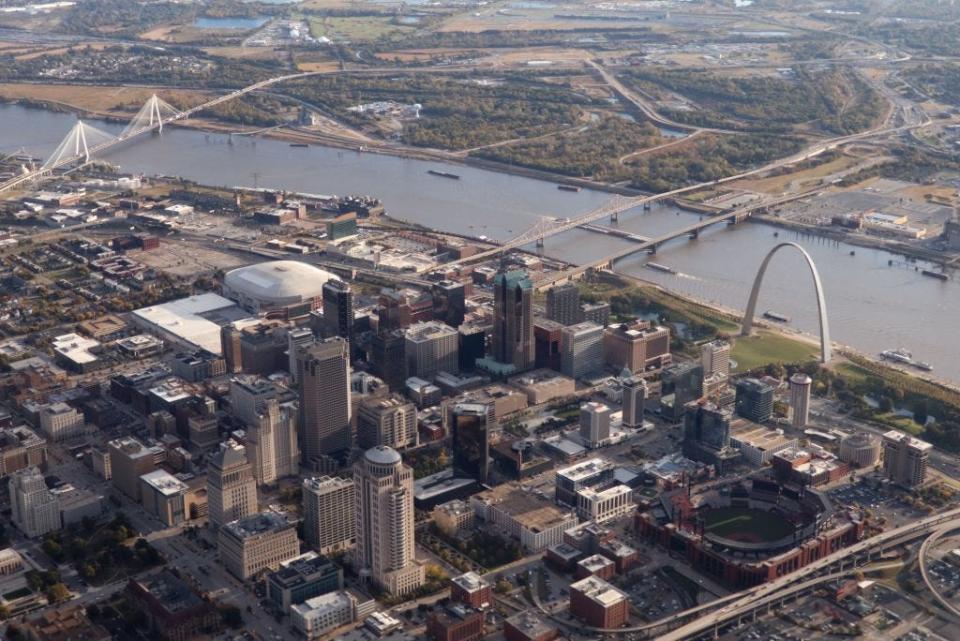Gateway Arch National Park may not sound familiar, but you probably recognize its landmark
Corrections & Clarifications: A previous version of this story misstated the year of the Dred Scott decision. It was decided in 1857.
St. Louis’ iconic Gateway Arch is one of America’s best-known landmarks. But many people may not realize it’s part of a national park.
Both the arch and Gateway Arch National Park commemorate the early pioneers of America’s westward expansion. St. Louis itself is known as the Gateway to the West because it was a starting point for so much of that exploration.
The park actually used to be called the Jefferson National Expansion Memorial, in honor of the late president’s role in expanding the country across the continent, but the park says the name never stuck, and it was formally changed in 2018.
Here’s what else travelers should know about Gateway Arch, the latest national park in USA TODAY’s yearlong series.

Where is Gateway Arch?
Gateway Arch National Park is located along the Mississippi River in St. Louis, near the Missouri and Illinois border.
The nearest airport is St. Louis Lambert International Airport.
What is special about Gateway Arch National Park?
In addition to sharing the history of westward expansion in the U.S., the park pays tribute to Dred and Harriet Scott, who, along with hundreds of other enslaved people, fought for their freedom in St. Louis’ Old Courthouse, which is preserved within the park.
According to the park and Missouri State Archives, both Scotts had been enslaved but had at one point been taken to free territory and sued for their freedom. In the past, Missouri courts had ruled in favor of “once free, always free,” but it wasn’t so straightforward with the Scott.
Eventually, their legal battle made it all the way to the U.S. Supreme Court, which in 1857 not only did not rule in the Scotts’ favor, but “upheld slavery in United States territories, denied the legality of Black citizenship in America, and declared the Missouri Compromise to be unconstitutional,” according to Missouri State Archives. The Missouri Compromise prohibited slavery above the 36th parallel, with the exception of Missouri itself.
The sweeping Dred Scott decision would spur what would ultimately become the Civil War.
Why is Gateway Arch so famous?
A major architectural competition was held in 1947 to determine the design for a landmark that would pay tribute to westward expansion at the then Jefferson National Expansion Memorial. Architect Eero Saarinen won with the design of what is now Gateway Arch. According to the park, “for him, ‘The major concern ...was to create a monument which would have lasting significance and would be a landmark of our time... Neither an obelisk nor a rectangular box nor a dome seemed right on this site or for this purpose. But here, at the edge of the Mississippi River, a great arch did seem right.’ ”
The steel arch stands 630 feet tall. For comparison, the Seattle Space Needle is 605 feet tall. The Empire State Building is 1,454 feet tall, including its spire and antenna.
The park says on a clear day, visitors can see 30 miles away from the top of the arch.
Fun facts: The arch has lightning rods so it can withstand lightning strikes. It can also withstand earthquakes and “sway as much as 18 inches in 150 mile per hour winds,” according to the park.
Can you go inside the Gateway Arch? How much does it cost?
You can take a tram to the top of Gateway Arch. It operates every day except Thanksgiving, Christmas and New Year’s Day. Tram pricing starts at $15 for guests age 16 and up and $11 for children ages 3 through 15.
There is no public stair access.
Admission to the park itself is free.
How long should you spend at the Gateway Arch?
It takes 45 minutes to tour the arch itself by tram, but visitors should plan for longer to explore the visitor center, free new museum and park grounds, which were designed to complement and enhance the arch, according to the park.
The Old Courthouse is closed for renovations.
National parks for all: How parks can make the outdoors more accessible to people with disabilities
Who are the Native people of the area?
According to the libraries of the University of Missouri, there are no federally recognized Native American tribes in Missouri today as most Indigenous people were forced out in the 1800s. However, the state is historically tied to the Illini Tribe, Ioway Tribe, Osage Nation, Otoe-Missouria Tribe and Quapaw Tribe. Several other tribes were also pushed into the area, but pushed out as well.

This article originally appeared on USA TODAY: St. Louis’ iconic Gateway Arch is more than just a landmark

